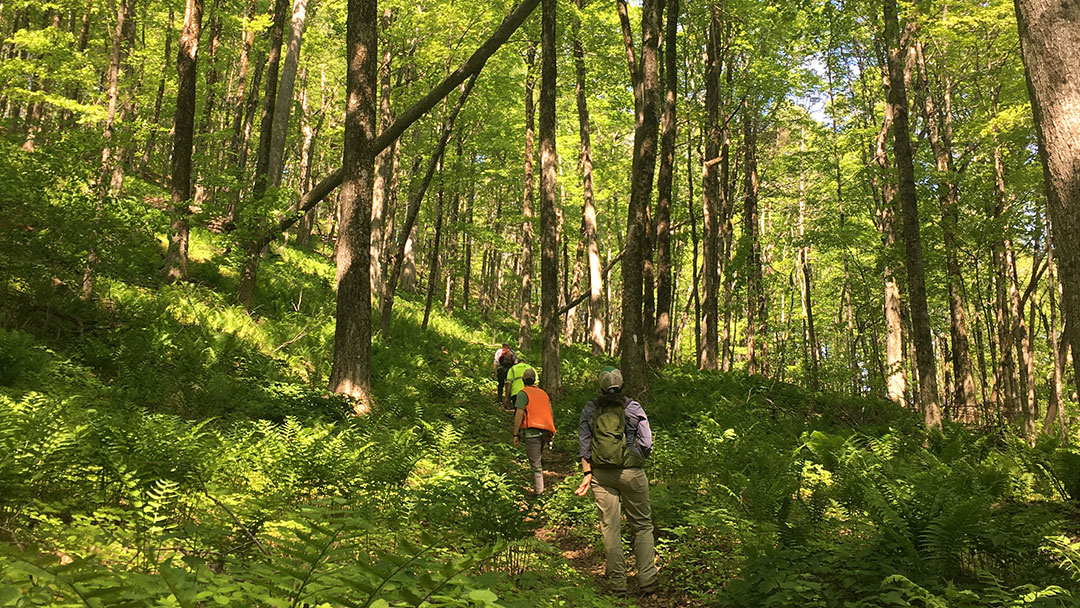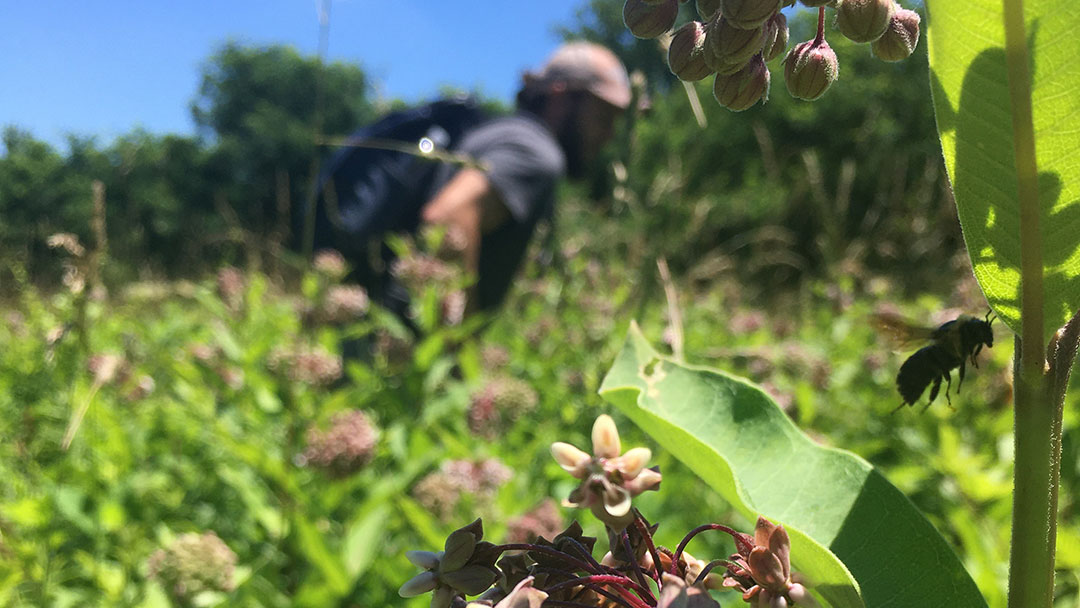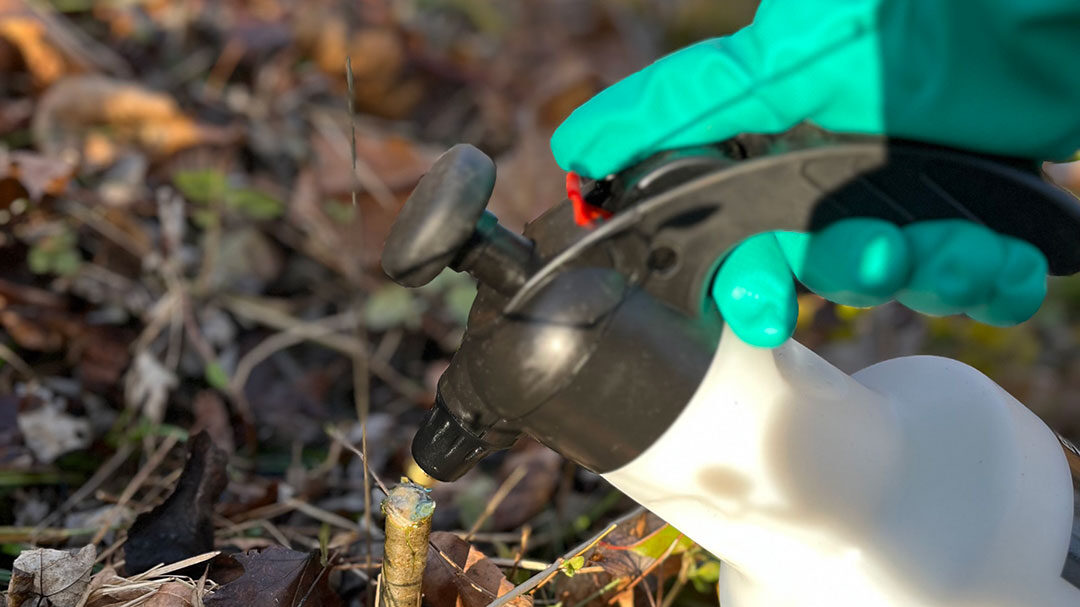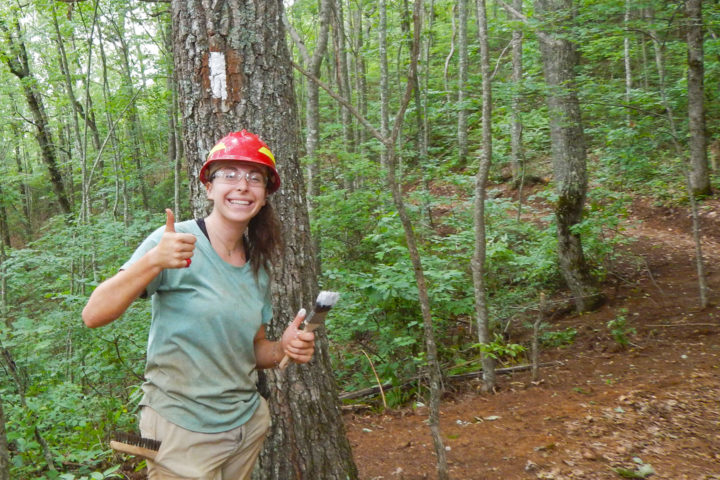Learn More
Science and Stewardship
Caring for the Appalachian Trail
Stewardship refers to the act of taking care of something precious. We know the Appalachian Trail (A.T.) is a precious, irreplaceable natural resource, which is why the Appalachian Trail Conservancy team works to take care of the Trail through a number of stewardship focus areas. From protecting the A.T.’s plants and animals, to preserving scenic views, discover how the ATC takes care of the Trail and its surrounding lands.
Natural Resource Stewardship
Running primarily along the spine of the Appalachian Mountains, the A.T. traverses many peaks, ridges, valleys, streams, and rivers as it stretches north to south across 12° of latitude and through changes of over 6,500 feet in elevation. This topographically diverse landscape with its many microclimates is what makes the Appalachian Mountains highly resilient as well as the most important stronghold of biodiversity in eastern North America.
The Appalachian Trail Conservancy works to protect and restore the natural resources found within the nearly 370,000-acre corridor of protected A.T. lands so that they may continue to provide quality habitat for imperiled species, an exceptional hiking experience, and critical ecological services like clean air, clean drinking water, and carbon sequestration. Roughly one-third of the U.S. population lives in close proximity to the A.T. In many respects, threats to the health of the A.T. landscape also represent environmental challenges to those communities surrounding the Trail.
Explore our four areas of focus:

Forest Health and Resiliency
Healthy and well-functioning forests are ones that are structurally and ecologically diverse with complex topography, varying forest age classes, and a range of microclimates. Healthy forests provide better habitat for wildlife, sequester and hold more carbon over the long-term, and are more resilient to pests, disease, and natural disasters. With the vast majority of the A.T. landscape dominated by forest communities, it comes as no surprise that forest health is of particular importance for the Trail. The ATC works with many partners to lead forest health initiatives such as restoration of declining and threatened forest communities, like high elevation spruce fir forest communities of the south.

Ecological Connectivity
From fragile alpine environments, to old growth forests, to grasslands and meadows, the ATC works to protect and maintain a mosaic of high quality habitats across the landscape. Maintaining and restoring a wide variety of habitats where naturally suited across the landscape, helps ensure appropriate resources like food, shelter, and breeding grounds are available to species moving throughout the landscape in both the short-term and long-term. ATC also works to foster new connectivity in areas where development and landscape fragmentation have isolated important habitats from their surroundings.


Native Biodiversity
The A.T. corridor has more than 1,800 occurrences of rare, threatened, and endangered plant and animal species. By protecting these rare species communities, and native biodiversity in general, the ecosystems in which they occur remain healthier and more resilient to changing environmental conditions and threats.

Invasive Species Management
ATC staff and volunteers work continuously to identify and remove non-native invasive plant and animal species that threaten the health and quality of A.T. resources. Invasive species can generally spread rapidly and can replace complex forest communities with single species monocultures. Invasions such as these often result in reduced quality and availability of food and habitat for wildlife. Invasive species can interfere with essential ecosystem processes such as nutrient cycling, water filtration, and fire regimes and diminish the ability of ecosystems to sustain economic activities like forestry, fishing, and agriculture. In some cases, non-native species invasions can reduce the aesthetic quality of the A.T. by degrading or even killing large forest sections and significant portions of the viewed landscape
Non-native invasive species can be spread by water, wind, and animals, but seeds can also be transported on the shoes, clothing, and equipment of Trail users. It is important to educate yourself about how recreational activities can contribute to the proliferation of invasive species.

Get Involved with Natural Resource Stewardship
The length and north/south alignment of the Appalachian Trail makes it an excellent area for studying environmental changes in the Eastern U.S. Getting involved with community science opportunities is a great way to help collect scientific information that can be used by researchers and land managers to help protect the Trail. Below are some of the projects ATC works with and ones we recommend checking out.

Visual Resource Stewardship
The Appalachian Trail’s Visual Resources include all the scenery along the Trail. It is estimated that there are nearly 1,400 scenic views along the entire A.T. and efforts are underway to conduct a thorough and accurate inventory of all A.T. views. Teams of ATC staff and volunteers are working state by state to cover every mile of Trail and document the views across the varied landscapes that the Trail traverses. The teams collect information about each view and evaluate it based on the National Park Service Visual Resource Inventory protocol.
The visual resource inventory work has allowed us to begin updating the AT vista layer in our interactive trail map. Check back each spring for the updated view locations.

Get Involved with Visual Resource Stewardship
If you are interested in volunteering with the Visual Resource Program, view current volunteer opportunities.

Corridor Stewardship
The A.T. Boundary Program protects the public’s investment in the lands that surround the Trail. To ensure the continued protection of the Trail corridor, volunteers from A.T. maintaining clubs work with the ATC to monitor and maintain more than 1,500 miles of the corridor’s exterior boundary from Tennessee to Maine.
To monitor, volunteers walk the tracts and boundary lines of lands acquired for the Trail and assess them to ensure their continued conservation. To maintain, volunteers repaint blazes and brush out the line, keeping it well marked and easy for our neighbors to identify.
Get Involved with Corridor Stewardship
If you are interested in volunteering with the Corridor Stewardship Program, view current volunteer opportunities.
You can also find resources and contact information by region below.
Resource Documents
- AT Corridor Stewardship Field Book
- Material Safety Datasheet – Boundary Paint
- Guidelines for the use of boundary paint
- Boundary Equipment Checklist 10-3-13
- Boundary Report Update 1-15-14
- Encroachment flowchart update 3-2014
- Encroachment_Report_Example_update_1-15-14
- Encroachment_Report_Bland_update_10_02_14
- Tree Stand SOP and notifications_8_2017
New England Region Contacts
For Natural Resource program information, please contact:
Dan Hale – Senior Natural Resource and Land Stewardship Manager
dhale@appalachiantrail.org
For Visual Resource program information, please contact:
Pamela Roy – Senior Visual Resource Program Manager
proy@appalachiantrail.org
For Corridor Stewardship program information, please contact:
Garrett Fondoules – Corridor Stewardship Coordinator
gfondoules@appalachiantrail.org
Mid Atlantic Region Contacts
For Natural Resource program information, please contact:
Marian Orlousky – Director of Science and Stewardship
morlousky@appalachiantrail.org
or
Eric Frederick – Natural Resource and Land Stewardship Manager
efrederick@appalachiantrail.org
For Corridor Stewardship information, please contact:
James Sodano – Corridor Stewardship Coordinator
jsodano@appalachiantrail.org
For Visual Resource program information, please contact:
Pamela Roy – Senior Visual Resource Program Manager
proy@appalachiantrail.org
Southwest Virginia Region Contacts
For Natural Resource program and Corridor Stewardship information, please contact:
Conner McBane – Senior Natural Resource Manager
cmcbane@appalachiantrail.org
or
Virginia Mooney – Natural Resource Coordinator
vmooney@appalachiantrail.org
For Visual Resource program information, please contact:
Pamela Roy – Senior Visual Resource Program Manager
proy@appalachiantrail.org
Southern Region Contacts
For Natural Resource program information, please contact:
Matt Drury – Associate Director of Science and Stewardship
mdrury@appalachiantrail.org
or
Emily Powell – Non-Native Invasive Species Coordinator
epowell@appalachiantrail.org
For Visual Resource program information, please contact:
Pamela Roy – Senior Visual Resource Program Manager
proy@appalachiantrail.org
Discover More

A Strong Future
Conservation
As stewards of the Appalachian Trail, our goal is to ensure it will be enjoyed for centuries to come.

From maintenance of the footpath and its facilities to greeting guests
Volunteer Opportunities
The Appalachian Trail (A.T.) would not exist without volunteers.

Official Blog
Partnering for A.T. Landscape Protection
A massive amount of collaboration and shared dedication is required to ensure A.T. landscapes are conserved.
